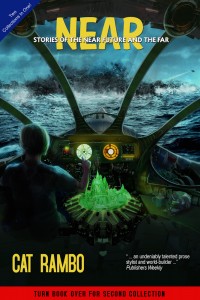
Use your moments to perceive what's around you in terms other than the visual, measuring warmth and smoothness and smell.
Here are some specifics of how to evoke the senses and entrap your reader (particularly within the first three paragraphs). You may mechanically apply these techniques at first, but if you persist, you’ll find including sensory details becoming second nature and helping you build the story’s world, mood, characters, and even conflict.
1. Do it with verbs. Verbs can evoke the sense in all sorts of ways, but they’re particularly well suited to the tactile, to yanking, fizzing, tugging, as well as the auditory, bubbling, echoing, pulsing. Keep a list of interesting verbs in your notebook or find a way to generate a list to play with: a group related to a particular profession, perhaps, preferably one that depends on the senses. Cooking verbs are more interesting than desk-sitting verbs, for example: fricassee, fillet, mince, chop, simmer, poach, and my favorite, chiffonade (to roll herbs in a tight cigar and cut into 1/8 to 1/16 inch ribbons).
2. Strip away filters. If you are writing from an attached point of view, either first or third person, you do not need constructions like “he smelled the cherry blossoms” – instead, “the smell of cherry blossoms filled the air” or “hung in the air” or whatever verb you like, preferably one that yanks on yet another sense. Those unnecessary constructions intrude on the space between the reader and the text, which should be filled with the vivid evocation of the story in the reader’s head, and not a bunch of words.
For example:
He smelled cherry blossoms coming from the window.
is (in my opinion) much more interesting as:
The smell of cherry blossoms washed in through the window.
That’s anchored much more deeply in your pov character’s consciousness than the first sentence. It allows the provision of a more interesting verb, “washed.” Both of those provide a closer connection to the sensory detail. If you want to dig even further into the character’s consciousness, you might delve into the memories he has of the smell, what feelings it evokes in him (terror, lust, or want are often good ones to use and help develop a character like nobody’s business) or what it tells him about his surroundings that he didn’t know before.
3. Go for the gut, the emotional, the upsetting. Next time something disgusts you, take long enough to get the details down, the oily sheen of rot as it dissolves underneath your touch, the way the smell of durian stuffs itself into your nostrils, the exact configuration of what lies in that toilet. Do the same with the bad and shameful in your history, the things that paralyze you, the inescapable physical details — the way your skin feels hot during a panic attack, or the quiver you can’t fight out of your voice and the way it echoes at the pit of your stomach. Put them on the page and you will be making a story that grabs the reader and tells them something true.
Writing exercise: a meal is one of the most evocative things you can evoke. Write a meal that you loved or hated and include the conversation that swirled through it, letting the diners’ voices tell a story within the table’s landscape.





